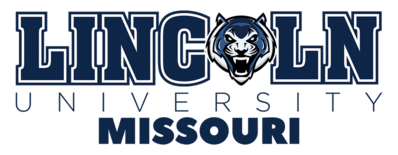Laws, Regulations, and Guidance
Lincoln University Police Department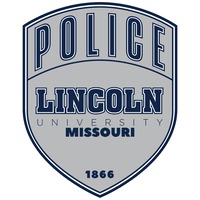
This is part of the current list of over 100 major laws, regulations, and guidance documents that EHS reviews to ensure that Lincoln University maintains compliance with the various agencies.
The various links give more information on the various topics.
PDF Version of Comprehensive List of Laws Regulations & Guidance
Applicable Laws, Regulations, and Guidance Documents
STATUTES/LAWS
Federal Statutes 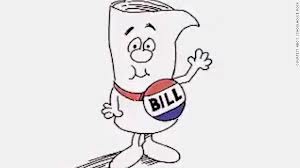 Federal laws generally apply to people living in the United States and its territories. Congress creates and passes bills. The President then signs those bills into law. Federal courts may review these laws and strike them down if they think they do not agree with the U.S. Constitution. Track Bills in Congress (How a Bill Becomes a Law)
Federal laws generally apply to people living in the United States and its territories. Congress creates and passes bills. The President then signs those bills into law. Federal courts may review these laws and strike them down if they think they do not agree with the U.S. Constitution. Track Bills in Congress (How a Bill Becomes a Law)
The United States Code contains the general and permanent laws of the United States. It does not include regulations issued by executive branch agencies, decisions of federal courts, treaties, or laws enacted by state or local governments. New laws are assigned a public law number and included in the next edition of the United States Statutes at Large & Public & Private Laws. You can also find new laws enacted by the current Congress before they are part of the United States Statutes at Large.
Missouri Statutes
Statutes are laws approved by the Missouri General Assembly and usually signed into law by the governor. They are based on constitutional authority granted to the legislature to establish policies and approved by a majority of the house and senate. The statutes, or the laws passed by the legislature, are published in the Revised Statutes of Missouri (RSMo.). Statutes may be created and amended each year by the legislature. State courts may review these laws and remove them if they think they do not agree with the Missouri Constitution. Track bills in the state of Missouri. (How a Bill Becomes a Law in Missouri and simplied pdf version)
REGULATIONS
Federal Regulations
Regulations are issued by federal agencies, boards, or commissions. They explain how the agency intends to carry out a law. Federal regulations are created through a process known as rulemaking. By law, federal agencies must consult the public when creating, modifying, or deleting rules in the Code of Federal Regulations (CFR). The CFR is broken up into 50 titles that define various categories. The titles are divided into chapters which bear the name of the issuing agency. This is an annual publication that lists the official and complete text of federal agency regulations.
Missouri Regulations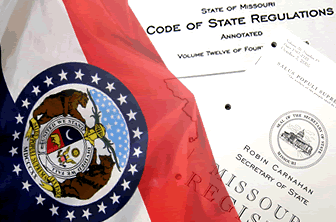 The executive branch of state government promulgates rules. The executive branch includes elected officials—governor, lieutenant governor, secretary of state, attorney general, state treasurer and state auditor. Also included in this branch under the administration of the governor's office are all the various state agencies, such as: the Department of Transportation, Department of Elementary and Secondary Education, Department of Conservation, Department of Public Safety, etc…etc.
The executive branch of state government promulgates rules. The executive branch includes elected officials—governor, lieutenant governor, secretary of state, attorney general, state treasurer and state auditor. Also included in this branch under the administration of the governor's office are all the various state agencies, such as: the Department of Transportation, Department of Elementary and Secondary Education, Department of Conservation, Department of Public Safety, etc…etc.
The Code of State Regulations (CSR) is divided into 22 titles. These titles bear the name of the state agency that promulgated the rules. An update to the Code of State Regulations is published once a month on the last day of the month. The rulemakings published in the Code become effective thirty (30) days after they are published unless a later day has been chosen by the agency.
REGISTERS
Once an agency decides that a regulation needs to be added, changed, or deleted, it typically publishes a proposed rule in the Federal Register to ask the public for comments. After the agency considers public feedback and makes changes where appropriate, it then publishes a final rule in the Federal Register with a specific date for when the rule will become effective and enforceable. When the agency issues a final rule for comment, it must describe and respond to the public comments it received. The Federal Register is updated daily.
The Missouri Register is the publication that sets forth all state agency rulemakings as they proceed through the rulemaking process. Specifically, the Register will contain emergency rules, proposed rules, final orders of rulemakings, and in additions. The purpose of the Missouri Register is to allow citizens access to the rulemaking process and the ability to comment on and recommend changes to proposed rules. Additionally, other state government information, such as dissolutions of limited liability companies and limited partnerships, are published in the Register. The Missouri Register is published twice a month, around the 1st and 15th of each month.
Local Ordinances/Laws
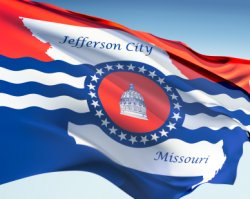 Jefferson City Ordinance/Laws are locals are introduced as bills by a local council person and voted on by the 10 member council. After the council approves the bill it becomes an ordinance and it is typically signed by the mayor and becomes a law. Local Ordinances can be found in "The Code of Jefferson City, Missouri".
Jefferson City Ordinance/Laws are locals are introduced as bills by a local council person and voted on by the 10 member council. After the council approves the bill it becomes an ordinance and it is typically signed by the mayor and becomes a law. Local Ordinances can be found in "The Code of Jefferson City, Missouri".
Consensus Standards
Consensus standards are standards developed by technical or professional societies or by national and international standards-setting organizations according to a well-defined procedure for consensus agreement among representatives of various interested or affected individuals, companies, organizations, and countries. A consensus standard is usually referred to as an industry, national, or international standard depending upon the scope of the organization that establishes and promulgates the standard.
Examples of Consensus Standards:
|
State Laws, Regulations, & Guidance |
Code of State Regulations (CSR) & Revised Statutes of Missouri (RSMO) |
|---|---|
|
Missouri DNR (Air Quality) |
|
|
Air Permitting Regulations & EIQs |
|
|
Chapter 643 RSMo. |
Air Conservation Statutes |
|
Missouri DNR (Water Quality) |
|
|
10 CSR20 - 6 |
|
|
Underground Storage Tank (UST) Tech Regs |
|
|
UST Financial Responsibility |
|
|
Petroleum Tank Insurance Fund (PSTIF) Regs |
|
|
Chapter 640 RSMo. |
Water Pollution Statutes |
|
Missouri DNR (Hazardous Waste) |
|
|
Hazardous Substance Emergency Response Office EPCRA (Right-to-Know) |
|
|
Hazardous Waste Regulations (SQG Handbook) |
|
|
Chapter 260 RSMo. |
Hazardous Waste Statutes |
|
Tank Regulations (HWP Tanks Section) |
|
|
Missouri DNR (Solid Waste) |
|
|
Infectious Waste Management |
|
|
|
|
|
PSTIF regulations |
|
|
Chapter RSMo. 319 |
Tank Statutes |
|
Missouri Emergency Response Commission |
|
|
Local Emergency Planning Committee (LEPC) Contact |
LEPC contact link |
|
Chapter 44 & 292.600 – 292.625 RSMo. |
SEMA Statutes |
|
Missouri Department of Public Safety (DPS) |
|
|
Boiler and Pressure Vessel Safety Regulations |
|
|
Chapter 650.200 – 650.295 |
Boiler and Pressure Vessel Safety Statutes |
|
Missouri Workers Health and Safety |
|
|
Chapter 285.525 RSMo. |
State Definitions regarding Workers |
|
286.147 |
DOLIR Power and Duty to Investigate Accidents resulting in Death at all Missouri Business |
|
Chapters 291.140 & 292.010 – 292.570 RSMo. |
Missouri Workers Safety Statutes |
|
Missouri DHSS (Radiation) |
|
|
Chapter 192.400 – 192.510 RSMo. |
Radiation Statutes |
|
Missouri DHSS (Bloodborne Pathogens) |
|
|
Bloodborne Pathogens Regulations |
|
|
Chapter 191.640 RSMo. |
Bloodborne Pathogens Statutes |
|
Chapter 292.300 RSMo. |
Protection of workers from diseases |
|
Missouri DHSS Institutional Review Board (IRB) |
|
|
Approval for Research Involving Human Subjects |
|
|
|
|
|
Chapter 269 RSMo. |
Disposal of Dead Animals Statutes |
http://www.moga.mo.gov/mostatutes/statutesAna.html
Federal Laws
|
|
|---|---|
|
Clean Air Act (CAA) |
42 U.S.C. §7401 et seq. (1970) |
|
Clean Water Act (CWA) |
33 U.S.C. §1251 et seq. (1972) |
|
Comprehensive Environmental Response, Compensation and Liability Act (CERCLA, or Superfund) |
42 U.S.C. §9601 et seq. (1980) |
|
Emergency Planning and Community Right-to-Know Act (EPCRA) |
|
|
Occupational Safety and Health (OSHA) |
29 U.S.C. §651 et seq. (1970) |
|
Pollution Prevention Act (PPA) |
42 U.S.C. §13101 et seq. (1990) |
|
Resource Conservation and Recovery Act (RCRA) |
42 U.S.C. §6901 et seq. (1976) |
|
Safe Drinking Water Act (SDWA) |
42 U.S.C. §300f et seq. (1974) |
|
|
|
Federal Regulations |
Code of Federal Regulations (CFR) & Alternate CFR link |
|---|---|
|
6 CFR 27.200(b)(2) |
|
|
|
App A. Chemicals of Interest |
|
USDA Plant Protection and Quarantine (PPQ) Select Agents and Toxins |
|
|
Animal & Plant Agents and Toxins |
|
|
Academic Research & Development Other License ARDL |
|
|
Notices, Instructions and Reports to Workers: Inspection and Investigations" |
|
|
Standards for Protection Against Radiation |
|
|
Rules of General Applicability to Domestic Licensing of Byproduct Material |
|
|
General Domestic Licenses for Byproduct Material |
|
|
Packaging and Transportation of Radioactive Material |
|
|
29 CFR 1910.2(c) & 29 CFR 1910.2(d) employer/employee definitions |
|
|
OSHA Regulations |
|
|
Subpart H - Hazardous Materials |
|
|
Compressed Gases (general requirements) |
|
|
Oxygen |
|
|
1910.106 |
|
|
Subpart I - Personal Protective Equipment |
|
|
General Requirements |
|
|
Head Protection |
|
|
Foot Protection |
|
|
Electrical Protective Equipment |
|
|
Hand Protection |
|
|
Subpart K – Medical and First Aid |
|
|
Subpart Z – Toxic and Hazardous substances |
|
|
Occupational Exposure to Hazardous Chemicals in Laboratories (Lab Standard) |
|
|
Spill Prevention, Control, & Countermeasures (SPCC) Plan |
|
|
Oil Spill Emergency Planning |
|
|
Hazardous Waste Regulations |
EPA |
|
Hazardous Waste Regulations |
|
|
Recyclable Material & Mixed Waste |
|
|
Land Ban |
|
|
Universal Waste |
|
|
Emergency Planning & Community Right to Know Act (EPCRA) |
|
|
Reportable Quantities for Haz Waste Release |
|
|
40 CFR 355.15, 40 CFR 355 Appendix A, & 40 CFR 355 Appendix B |
Emergency Planning (Extremely Hazardous Substance (EHS) & Threshold Planning Quantities (TPQ)) |
|
Tier II Report Regulations |
|
|
Protection of Human Subjects |
|
|
Hazardous Materials & Shipping Regulations |
|
|
Hazardous Material Shipping Table |
Other Applicable Laws, Guidance, & Consensus Standard Documents |
Extensive Consensus Standard Resource |
|---|---|
|
City |
Jefferson City Code |
|
Chapter 29 Article III |
Discharge of Wastes into Water Systems |
|
|
|
|
NFPA 30 |
Flammable & Combustible liquids |
|
NFPA 45 |
Standard on Fire Protection for Laboratories Using Chemicals |
|
NFPA 70 |
National Electrical Code (NEC) |
|
Local Power to Adopt Building & Fire Codes RSMo. 64.170 & RSMo. 321.228 |
|
|
International Building Codes |
Jefferson City adopted 2009 code as of 10/21/13 |
|
International Fire Codes |
Jefferson City adopted 2009 code as of 6/30/12 |
|
CDC Biosafety Information |
|
|
Biosafety in Microbiological and Biomedical Laboratories (BMBL) 5th Edition 2009 (Latest Edition) |
Management Practices to Ensure Safety for Researches Working with Animals or Biological Agents. (BioSafety Levels 1 , 2, 3, & 4) |
|
|
|
|
|
|
|
|
Biosafety and Compliance |
|
|
Office of Biotechnology Activities |
